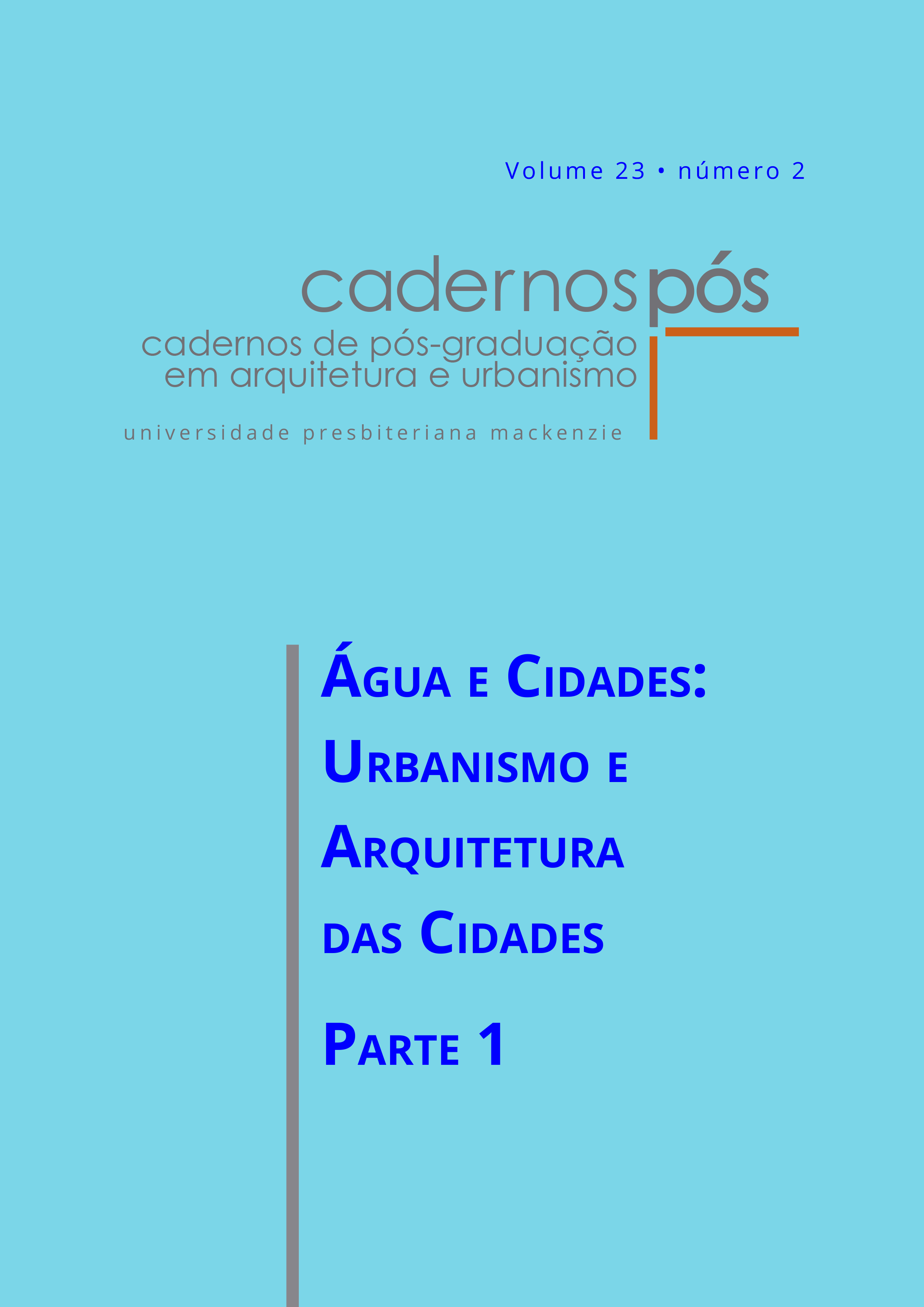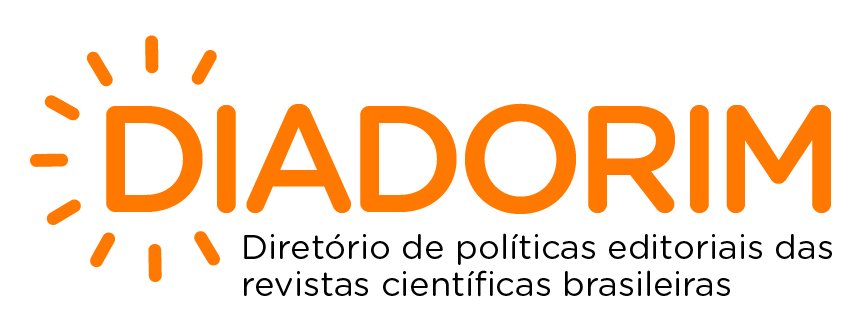Size of Permanent Preservation Areas (APPs)
considerations on the Itaquarinchim River
DOI:
https://doi.org/10.5935/cadernospos.v23n2p162-180Keywords:
Rivers, Permanent Preservation Areas, APPs, BufferAbstract
Throughout history, areas adjacent to rivers have been occupied, exterior spaces of great ecological and landscape value in places with environmental and social problems. In this context, Permanent Preservation Areas (APPs) are an important tool that seeks to protect water resources. The legislation defines which APPs ranges (buffers) are suitable according to the width of the water resource, but there are discussions about whether these dimensions would be adequate. Taking the Itaquarinchim river in the municipality of Santo Ângelo-RS as a case study, we seek to understand its relationship with the surrounding landscape, both in rural and urban contexts. How to cut this survey was considered a buffer of 500 meters for each side of the riverbed. From the spatialization of the study area in geoprocessing, it will be analyzed how the use and occupation of the soil and the relationship of the river with its surroundings took place. Also, if the river has an APP in accordance with the legislation in force (30m) along its route and its condition. Finally, if it has the potential to expand this APP range from 30m to a greater width and if it could support multifunctional activities in this context.
Downloads
References
ARAÚJO, S. V. G.; GANEM, R. S. A nova lei florestal e a questão urbana. In: SILVA, A. P. M.; MARQUES, H. R.; SAMBUICHI, R. H. R. Mudanças no código florestal brasileiro: desafios para a implementação da nova lei. Rio de Janeiro: Ipea, 2016.
BARTALINI, V. A trama capilar das águas na visão cotidiana da paisagem. Revista USP, São Paulo, n. 70, p. 88-97, 2006.
BENTRUP, G. Conservation buffers: design guidelines for buffers, corridors and greenways. Asheville, NC: Department of Agriculture, Forest Service, Southern Research Station, 2008.
BRASIL. Lei n. 12.651, de 25 de maio de 2012. Institui o novo Código Florestal brasileiro. Diário Oficial da União: Brasília, DF, 2012.
BRASIL. Lei n. 14.285, de 29 de dezembro de 2021. Altera a Lei n. 12.651, de 25 de maio de 2012. Diário Oficial da União: Brasília, DF, 2021.
CASTRO, V. M. U. Caracterização fisiográfica e parâmetros de qualidade da água da microbacia hidrográfica do arroio Itaquarinchim, Santo Ângelo/RS. 2016. Dissertação (Graduação em Engenharia Ambiental) – Universidade Federal da Fronteira Sul, Cerro Largo, 2016.
COSTA, L. M. A. (org.). Rios e paisagens urbanas: em cidades brasileiras. Rio de Janeiro: Prourb, 2006.
CROCE, R. Relações entre espaço urbano e cursos d’água: conflitos e interações no Vale do Rio Doce. 2020. Dissertação (Mestrado em Arquitetura e Urbanismo) – Universidade Federal do Espírito Santo, Vitória, 2020.
FORMAN, R. T. T. Land mosaics: the ecology of landscape and regions. Cambridge: Cambridge University Press, 1995.
FORMAN, R. T. T.; GODRON, M. Landscape ecology. New York: John Wiley and Sons, 1986.
GORSKI, M. C. B. Rios e cidades: ruptura e reconciliação. São Paulo: Senac, 2010.
GUIMARÃES, E. A. Parques lineares como agenciadores de paisagem: realidades e possibilidades do rio Tubarão no contexto urbano de Tubarão, SC. 2011. Dissertação (Mestrado em Urbanismo, História e Arquitetura da Cidade) – Universidade Federal de Santa Catarina, Florianópolis, 2011.
HAWES, E.; SMITH, M. Riparian buffer zones: functions and recommended widths. Eightmile River Wild and Scenic Study Committee, p. 1-15, 2005.
INSTITUTO BRASILEIRO DE GEOGRAFIA E ESTATÍSTICA (IBGE). Panorama cidades. 2021. Disponível em: https://cidades.ibge.gov.br/. Acesso em: 14 ago. 2021.
JONGMAN, R.; PUNGETTI, G. Ecological networks and greenways: concept, design and implementation. Studies in Landscape Ecology. New York: Cambridge University Press, 2004.
MARCHI, D. O arroio Itaquarinchim: protagonista da história e do desenvolvimento de Santo Ângelo. Santo Ângelo, fev. 2010. Disponível em: http://santoangeloemfatosefotos.blogspot.com.br/2010/02/o-arroio-itaquarinchim-protagonista-da.html. Acesso em: 12 jan. 2020.
MELLO, S. S. Na beira do rio tem uma cidade: urbanidade e valorização dos corpos d’água. 2008. Tese (Doutorado em Arquitetura e Urbanismo) – Universidade de Brasília, Brasília, 2008.
PERINGER, C. S.; SILVA, I. H. Proposta para um plano global de preservação da bacia hidrográfica do rio Itaquarinchim. 2001. Monografia (Graduação em Geografia) – Universidade Regional Integrada do Alto Uruguai e das Missões, Santo Ângelo, 2001.
Published
Versions
- 2023-12-20 (2)
- 2023-12-20 (1)
How to Cite
Issue
Section
License
Copyright (c) 2023 Karine Perius Chartanovicz, Luis Guilherme Aita Pippi

This work is licensed under a Creative Commons Attribution 4.0 International License.
Authors who publish in this journal agree to the following terms:
a) Authors retain the copyright and grant the journal the right of first publication, with the Project simultaneously licensed under the Creative Commons Attribution License that allows the sharing of the Project with recognition of the authorship and initial publication in this journal.
b) Authors are authorized to assume additional contracts separately for the non-exclusive distribution of the version of the Project published in this journal (e.g., publishing in an institutional repository or as a book chapter), indicating that it was originally published in this journal, with a link to the article.








 Todo o conteúdo de Cadernos de Pós-Graduação em Arquitetura e Urbanismo está licenciado sob
Todo o conteúdo de Cadernos de Pós-Graduação em Arquitetura e Urbanismo está licenciado sob 